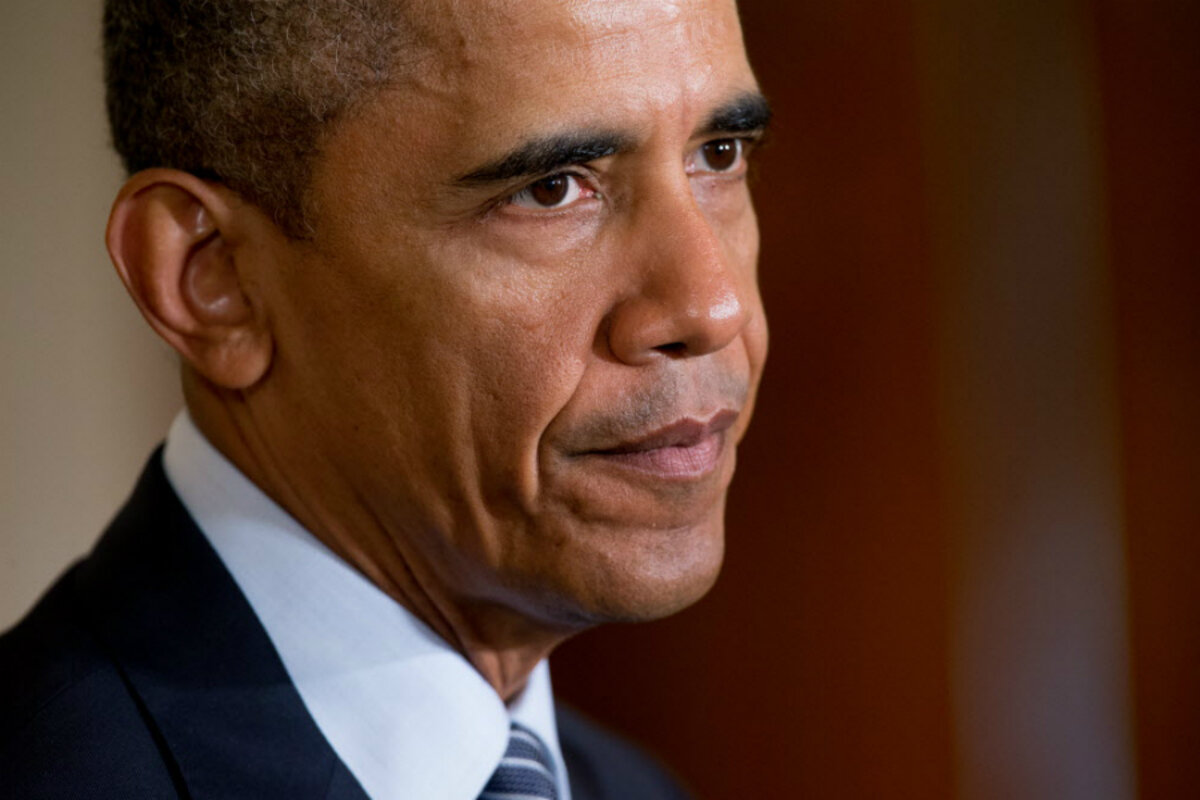Can Obama's Clean Power Plan survive in court?
Loading...
Just a few minutes after 8 a.m. on Monday – six hours before President Obama was scheduled to formally unveil sweeping new rules to limit gas emissions, one of America’s largest coal companies announced that it was planning on filing five lawsuits challenging it.
The Clean Power Plan is being simultaneously hailed as the most significant climate action ever taken by a US president – and as the latest example of federal overreach into the lives of Americans. With momentum from his recent victories in health care, gay rights, and the Iran nuclear deal, President Obama is now��aiming high��in his efforts to reduce US greenhouse gas emissions.
But many hurdles still remain. On top of the anticipated barrage of lawsuits from coal companies and industry groups, more than a dozen states are already resisting the new regulations.
The new rules also give states individual targets, marked by regular deadlines, to reduce their carbon output. The final version of the plan requires the US power sector to cut its carbon dioxide emissions by 32 percent from 2005 levels by 2030 – an increase from the 30 percent cut called for in last summer’s draft rules. But states now have two extra years, until 2022, to comply.
Fifteen states are already challenging the plan – with West Virginia the lead plaintiff in an����filed with 11 other states. Senate majority leader Mitch McConnell (R) of Kentucky, a coal-producing state, has called on state governors to��defy the new rules. The Senate is expected to take up legislation to delay compliance with new EPA rules until all litigation is resolved.
Already, the Clean Power Plan faces a protracted legal battle both at the state level and in the courts. The question is how well the plan might fare.
Opponents of the rule say that the EPA doesn’t have the authority to regulate greenhouse gas emissions from power plants on top of existing regulations of toxic emissions like mercury and sulfur dioxide.
Murray Energy Corp. – the largest underground coal mining company in the country and a lead plaintiff in one of the earlier lawsuits – calls the Clean Power Plan “flagrantly unlawful.” The new regulations will force states to radically change their energy mixes, adversely restructure America’s electric power grid, and increase the cost of electricity for all Americans, the company said in its .
With its five lawsuits, the statement continued, Murray Energy “is seeking to block an illegal rulemaking which will be devastating to all Americans.”
Murray Energy had filed an����to the plan last year, but the US Court of Appeals for the District of Columbia Circuit dismissed it in June, ruling that a group could not challenge the regulation before the EPA had issued a final version of it.��
“We have no choice but to challenge the Obama administration’s illegal actions in court,” said Robert Murray, the company’s president, chairman and CEO. “And we will prevail.”
Opponents are also challenging the��constitutionality of the rules. At a House subcommittee hearing in March, Laurence Tribe, a constitutional law professor at Harvard Law School, compared the plan to “burning the Constitution.” ��In addition to representing Peabody Energy, the world’s largest private-sector coal company, in a lawsuit against the rules, Professor Tribe was Vice President Al Gore’s lawyer in the US Supreme Court's Bush v.��Gore case. He was also Obama’s law professor at Harvard. The GOP-controlled House panel tweeted out his comment before the hearing had ended.��
But the issue for states is on a different legal footing. If states refuse to comply with the new rules, they could have a federal plan imposed on them, says Richard Revesz, director of the Institute for Policy Integrity at the New York University School of Law.
That’s standard practice with such statutory provisions, he says.
Even after Obama leaves office, when many of these cases will likely still be unresolved, the courts may still order the EPA to implement a federal plan on those states refusing to comply with the Clean Power Plan, even if they have the tacit support of a new Republican president, he adds.
“At that point, the EPA will have a non-discretionary duty to issue federal plans, so if the president and the EPA decided not to do that, that decision would be challenged in the courts and they’d almost certainly lose,” he says.
But first the plan has to survive these legal challenges. Revesz, who also testified at the House hearing, says that the Clean Power Plan is “on a strong legal footing.”
“There’ll be lots of challenges from Murray and from the states,” he says, “[but] there’s no plausible scenario in which those challenges will prevail.”
And if the challenges fail, it will become that much harder for states to resist the regulations. One way or another, he says, the emissions reduction targets prescribed in the plan will be met.
“If the rule is upheld these things will follow inexorably,” he says.





